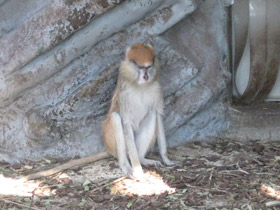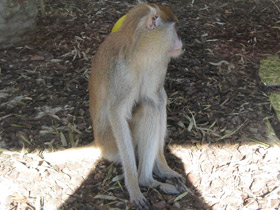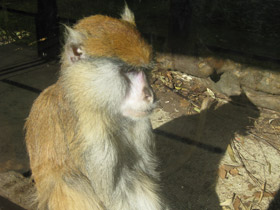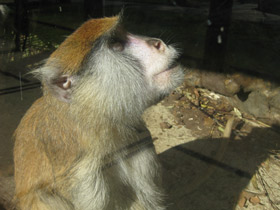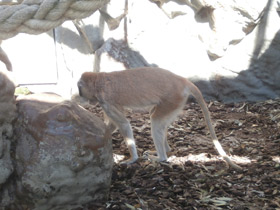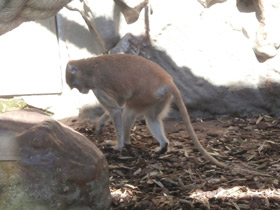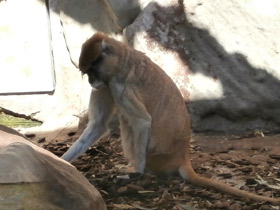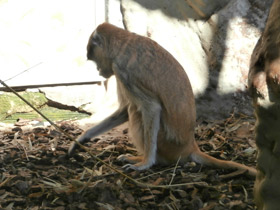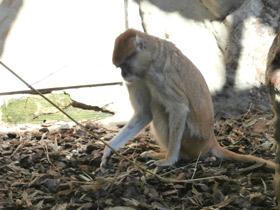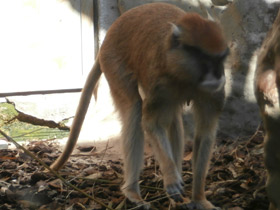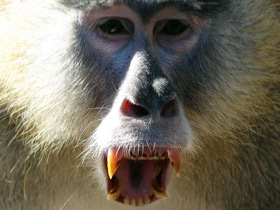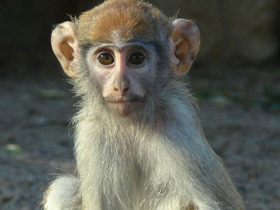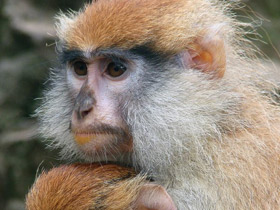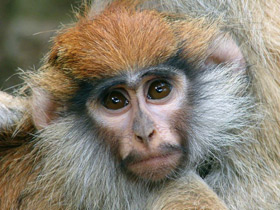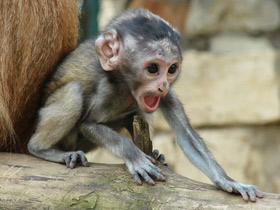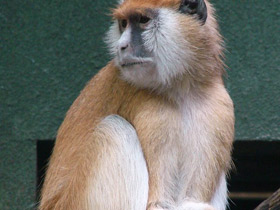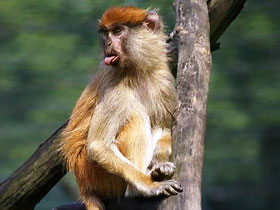The common patas monkey or the hussar monkey (Erythrocebus patas)
Common patas monkey видео
The common patas monkey (Erythrocebus patas), also known as the hussar monkey, is a ground-dwelling monkey distributed over semi-arid areas of West Africa, and into East Africa.
Taxonomy
There is some confusion surrounding if there are valid subspecies, with some listing four, others three, and others listing two: the western Erythrocebus patas patas (with a black nose) and the eastern Erythrocebus patas pyrrhonotus (with a white nose). However, it was later discovered that the nose colour used to separate these subspecies could change to white during pregnancy in females, as well as in general as animals aged, and Erythrocebus patas pyrrhonotus in Kenya often did not have white noses, thus Mammal Species of the World has classified Erythrocebus patas as a monotypic species.
The genus status of the species has previously been in flux. Colin Groves first argued the species was closely related to Cercopithecus aethiops in 1989, based on anatomical morphology. Phylogenetic evidence from 2003 appeared to validate him, finding the patas monkey to form a clade within the vervet genus Cercopithecus together with Cercopithecus aethiops and Cercopithecus lhoesti, and based on this study Erythrocebus was proposed to be sunk into synonymy with Cercopithecus. However, more recent studies have found this interpretation of Cercopithecus to be paraphyletic, and thus many species in Cercopithecus have since been reclassified to numerous new genera and species, with Cercopithecus aethiops moved to Chlorocebus and Cercopithecus lhoesti to Allochrocebus. Erythrocebus is thus now thought to be a distinct genus.
Erythrocebus was previously thought to be a monotypic genus containing only Erythrocebus patas. However, a 2017 study proposed splitting Erythrocebus patas into three species (Erythrocebus patas sensu stricto, Erythrocebus poliphaeus, and Erythrocebus baumstarki) based on morphological differences and heavy geographic separation between taxa, with the IUCN Red List and American Society of Mammalogists following through with this.
Hábitat
Erythrocebus patas is a species of catarrhine primate in the family Cercopithecidae. It is the only species of the genus Erythrocebus. It is the only species of the genus Erythrocebus. Erythrocebus patas is quite common in sub-Saharan Africa. It is found in Senegal, Sudan, Ethiopia and Uganda, and prefers wooded steppes and open savannahs. Erythrocebus patas lives in acacia woodlands and drier shrub-covered areas in the forests of equatorial North Africa.
Appearance
The largest of the monkeys, Erythrocebus patas owes its name to its distinctive appearance: it has bright orange fur and a distinctive white moustache on the muzzle, which stands out against the darker fur. The fast movements of these animals on the savannah may have reminded 19th century travellers of advancing regiments of light cavalry. Males reach a body length of 58-75 cm and weigh between 7.5 and 12.5 kg. Erythrocebus patas has large tusks and a slender body with long limbs and tail (up to 62-74 cm).
Lifestyle and nutrition
The peculiarities of appearance and skeletal structure indicate that these monkeys, in contrast to other monkeys, are terrestrial animals. They can climb small trees in case of danger, but usually prefer to flee. Erythrocebus patas is the fastest of all primates, and can reach speeds of up to 55 km/h.
On the ground, in search of food, Erythrocebus patas moves on all fours; in tall grass, it often stands up on its hind legs and, leaning on its tail, observes its surroundings, in time to detect approaching danger.
It can also walk on its hind legs, carrying something on its forelegs.
During the day, Erythrocebus patas forage for food by hiding in tall grasses, and at night they climb trees. Their diet includes roots, shoots, leaves, mushrooms, seeds and fruits of various plants, as well as insects, molluscs, lizards, small birds and their eggs.
Social behaviour and reproduction
Erythrocebus patas usually keeps groups of 5-30 individuals, consisting of an adult male, 3-8 females and offspring of different generations. The roles played by the leader are due to the nature of life in the lowlands, where the group is constantly at risk of attack by leopards and hyenas.
He is responsible for detecting any approaching danger, either by climbing on his hind legs and peering out into the tall grass, using his tail for support, or by climbing a solitary growing tree to survey the surroundings.
If the male sees a predator, he does not bark loudly in alarm, but emits soft, chirping sounds that immediately alarm the whole group. The monkeys hide silently in the grass, while the leader performs distraction manoeuvres: he jumps noisily on the branches and then rushes in the opposite direction to where the females and cubs have taken refuge, to give them a chance to escape from their enemies.
Adult single males may form small bachelor groups. During the day, the group of monkeys feed dispersed, but their members are in constant visual contact with each other.
Erythrocebus patas are rather shy and fearful animals. They are very silent and only use 4-5 sounds to communicate. The group travels long distances, sometimes up to 12 km a day. The dominant male has to constantly confirm his status as harem master in fights with single males.
Pregnancy lasts 170 days, after which the species gives birth to a single calf. Births take place between December and February. During the first three months of life, the mother carries the calf on her belly. In captivity, Erythrocebus patas live up to 20 years or more.

















